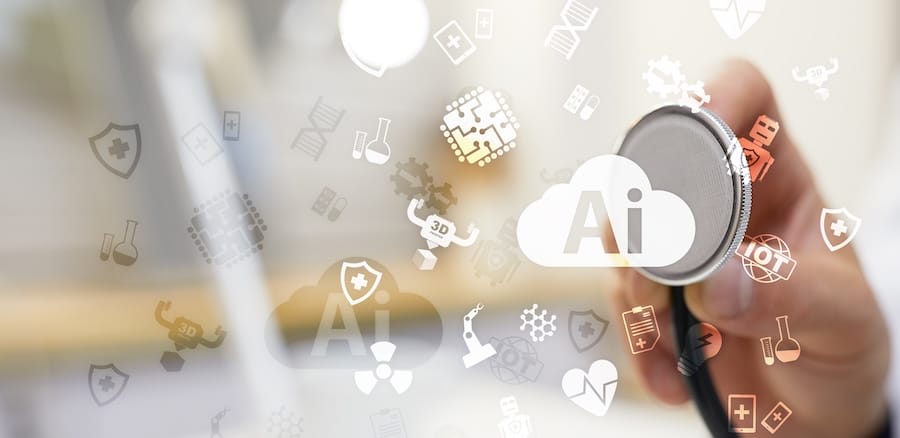Artificial intelligence (AI) is no longer just a promising concept in healthcare. It is becoming a critical tool for improving outcomes, enhancing efficiency, and empowering clinicians. From predicting disease progression to streamlining operations, AI has the potential to transform how care is delivered.
But there is a catch. AI can only be as effective as the data it uses. For too many organizations, that data is incomplete, siloed, outdated, or inconsistent. Nearly half of healthcare leaders cite poor data quality, fragmented integration, and weak governance as their biggest barriers to AI adoption.
The road to AI powered healthcare starts with one crucial step, making health data AI ready.
Why AI Ready Data Matters More Than Ever
Healthcare organizations generate enormous volumes of data every day from electronic health records (EHRs) and lab systems to imaging, claims, social determinants of health, and patient generated data from wearables.
Each of these sources often speaks its own language, following different formats, standards, and levels of completeness. Designed long before the rise of AI, legacy data architectures were never built to handle today’s scale, speed, or variety of data.
Without clean, consistent, and connected data, AI models will struggle to produce accurate or meaningful insights. Even the most sophisticated algorithms cannot overcome the limitations of poor-quality input. If the data is flawed, the results will be flawed, potentially leading to misguided decisions and missed opportunities for intervention. It’s imperative that the garbage-in garbage-out conundrum is addressed early.
This is why AI readiness is not a one-time project. It is an ongoing commitment to ensuring that healthcare data is accurate, complete, contextually relevant, and available in real time.
The Core Pillars of AI Ready Health Data
Building AI ready data starts with an intentional strategy that addresses the full lifecycle of health information. Key pillars include:
1. Multi Source Data Integration: AI thrives when it can see the full picture. This means ingesting data from diverse sources including EHRs, labs, imaging systems, claims data, social determinants of health, and wearables, and bringing them together in a unified format.
2. Automated Normalization and Cleaning: Data from different systems rarely matches perfectly. Automated processes for cleaning, standardizing, and enriching data ensure that every field is consistent, accurate, and complete. This also reduces the burden on teams who would otherwise spend countless hours manually reconciling records.
3. Interoperability and Standards Alignment: Compliance with interoperability standards such as FHIR and the requirements of the 21st Century Cures Act is critical. Aligning to these standards not only ensures regulatory compliance but also makes it easier to exchange data across the care ecosystem.
4. Real Time Orchestration and Alerts: AI works best when it can act on current information. Real time data fabric architectures allow insights such as care gap alerts or risk notifications to be delivered directly into clinical workflows, where they can immediately influence patient care.
5. Governance, Security, and Continuous Monitoring: Protecting patient privacy and maintaining trust is non-negotiable. Strong governance frameworks and adherence to standards such as HIPAA, HITRUST, and NCQA keep sensitive information secure. Continuous monitoring also ensures that data remains relevant and that its quality does not drift over time.
Breaking Down Fragmentation
One of the biggest obstacles to AI readiness is the fragmented nature of healthcare data environments. In many organizations, different departments or facilities handle their own data management tasks independently, leading to inconsistent practices and disconnected systems.
This fragmentation not only slows down AI adoption but can also erode trust in both the data and the AI models that rely on it. The solution is a more unified approach, where AI implementation teams and data management teams work together from the start.
In some cases, AI teams may take ownership of data preparation to ensure that the information feeding their models meets the right standards. In others, data engineers and analysts are empowered with clear requirements and the authority to deliver consistent, high-quality data.
The most successful organizations clearly define who is responsible for each part of the AI readiness process and make sure those responsibilities are carried out with a shared vision of what “ready” really means.
From Better Data to Better Care
When healthcare organizations achieve AI ready data, the benefits are tangible. Care teams can identify risks earlier, engage patients proactively, and close care gaps before they escalate into costly complications.
Imagine a health plan aiming to prevent diabetic complications. With AI ready data, they can unify lab results, prescription records, and encounter histories from multiple systems in near real time. AI models can then detect patterns that signal early warning signs, triggering alerts to care coordinators. Instead of waiting for problems to worsen, the care team can reach out to the patient immediately, potentially preventing a hospitalization.
This is not just about technology. It is about delivering better care, improving population health, and using resources more efficiently.
Preparing for the Future
The AI era in healthcare is here, but its full potential will only be realized by those who invest in the foundations of data quality, integration, and governance. Proof of concept AI models may show promise, but without AI ready data, they will struggle to scale or produce consistent results across multiple contexts.
By building a comprehensive AI data readiness strategy that unifies data sources, applies rigorous governance, ensures interoperability, and delivers real time access, healthcare organizations can position themselves for long term success.
In the years ahead, the difference between leaders and laggards in healthcare AI will not be the algorithms they use. It will be the quality, completeness, and timeliness of the data that fuels them.
The organizations that master AI ready health data will be the ones driving smarter care, better outcomes, and a more sustainable healthcare system.
Image Source: ID 132056545 | Healthcare ©
Wrightstudio | Dreamstime.com

Mark Coetzer
Mark Coetzer is VP of Business Development at IMAT Solutions, providers of health data intelligence platforms designed to help care organizations break down data silos, improve interoperability, and deliver real-time, actionable insights.







